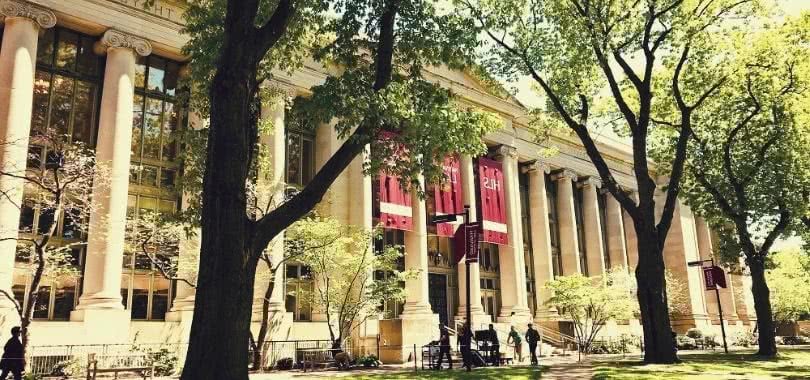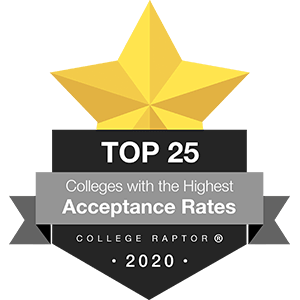- Most medical schools have an acceptance rate below 7%.
- Medical school is competitive in that fewer than 45% of overall applicants are accepted to any medical school.
- To increase your acceptance chances, focus on a high GPA, strong MCAT score, relevant extracurriculars, and a well-rounded application.
 Getting into medical school is anything but easy. Less than 50% of applicants are accepted, and schools have extremely low acceptance rates. Some even have acceptance rates lower than 1%! If you want to pursue a career in medicine, we’ve outlined some must know information about medical school acceptance rates, application tips, and more below.
Getting into medical school is anything but easy. Less than 50% of applicants are accepted, and schools have extremely low acceptance rates. Some even have acceptance rates lower than 1%! If you want to pursue a career in medicine, we’ve outlined some must know information about medical school acceptance rates, application tips, and more below.
Medical School Acceptance Rates
In 2024, most medical schools in the United States had an acceptance rate below 7%. Overall, applicants have a 42% to 45% chance of getting accepted to at least one of their choices.
Medical school is largely competitive due to the sheer number of students applying and the limited spots. Stronger applicants in recent years and the resulting higher academic standards also makes it difficult to get accepted. However, institutions are opening up new medical programs, which means there are more medical students than ever before.
Allopathic (MD) Vs. Osteopathic (DO)
Allopathic doctors (M.D.) focus on treating symptoms and diseases using evidence-based measures, including drugs and surgery. Osteopathic doctors (D.O.) use a holistic approach, focusing on the whole person rather than single symptoms.
Allopathic is more popular among applicants, so acceptance rates are lower at individual schools. The NYU Long Island School of Medicine is one of the hardest institutions to get into, as they accepted just 0.55% of students in 2024. The Kaiser Permanente Bernard J. Tyson School of Medicine and University of Texas at Tyler School of Medicine are not far behind, at 0.67% and 0.86% respectively.
The most selective osteopathic schools include Lake Erie College of Osteopathic Medicine – Bradenton Campus (2.10%), A.T. Still University – School of Osteopathic Medicine in Arizona (2.5%), and Chicago College of Osteopathic Medicine of Midwestern University (3.10)%.
However, since there are more allopathic schools, students have a slightly easier time getting accepted to one. Overall, 44.58% of MD applicants get into at least one school, compared to 42.28% of DO applicants.
In-State Vs. Out-of-State
Public medical schools (as well as some private institutions) receive funding from the state. As a result, they prioritize in-state applicants. For example, the Albany Medical College has a 2.3% acceptance rate for in-state students, but just a 0.83% rate for out-of-state applicants (1.08% overall).
You could increase your chances of getting accepted by applying to a medical school within your state, while also potentially benefiting from lower in-state tuition. However, private schools tend to have more financial aid available.
What Impacts Your Medical School Acceptance Chances?
Grades and Medical College Admission Test (MCAT) scores are two of the biggest factors for individual admission, but other aspects come into play, too. Here’s a look at the common ones:
- GPA: Applicants typically have a 3.6 GPA or higher. The NYU Grossman School of Medicine accepted students have an average 3.98 GPA.
- MCAT: Students should aim for a 510 or better on the MCAT. While you can take it multiple times, it could lower your admission chances at select schools.
- Experience and extracurriculars: Medical schools are looking for students who have clinical experience, volunteer work, and extracurriculars related to the healthcare field, such as research project participation.
- Interview: Admissions departments conduct interviews before making final decisions, assessing each applicant’s skills, specifically as they relate to the healthcare industry.
- Personal statement and essays: Applicants have to submit a personal statement explaining why they want to go to medical school as well as secondary essays on requested topics, such as leadership, personal challenges, diversity, and more.
- Letters of recommendation: School requirements vary, but you’ll typically need two to five letters of recommendation that highlight your suitability for the institution.
- Major: Your major doesn’t have a huge impact on your acceptance chances – schools just want you to take the prerequisite courses. However, some areas of study have slightly higher overall acceptance rates, such as Math and Statistics at 52.3%.
How To Improve Your Chances Of Getting Accepted Into Medical School
To increase your chances of getting into medical school, remember these tips:
- Start early: Medical school applications take a massive amount of time. You need to prepare for the MCAT, research schools, complete applications, and more. Start early to make sure you have enough time to do it all.
- Improve your GPA: Grades are a huge part of your medical school application. You’ll need to get it above a 3.4, at minimum, to give yourself your best chance of getting accepted.
- Prepare for the MCAT: Aim for a total score of 510 or higher, with no individual section below a 127. Start preparing early, as experts recommend, you’ll need to study for at least 300 hours.
- Get experience: One of the most important things you can do beyond improving your GPA and MCAT is to get relevant experience, such as job shadowing and research participation.
- Volunteer and join extracurriculars: Medical schools want to see you’re interested in serving your community. Even if it’s not related specifically to the healthcare industry, volunteering shows you’re dedicated and have interpersonal skills.
- Apply to several schools: If you only apply to one medical school, you’re unlikely to get an acceptance letter. You should apply to at least 15 programs, but many submit applications to between 20 and 30.
- Prepare for interviews: Complete mock interviews with your peers to prepare for your medical school interviews. Always be polite and dress professionally.
Do Med School Rankings Matter?
Whether medical school rankings matter depends on the ranking criteria and the individual student.
Generally, medical schools are ranked on quality, acceptance rates, selectivity, median MCAT, undergraduate GPA, research activity, peer assessments, reputation, citations, and resources. An unranked institution doesn’t necessarily mean it’s bad – it may simply not supply enough information to be included in the rankings.
College rankings can be informative. They give students insights into the top schools in the country and, in a few select careers, attending one of these can give you a leg up. However, that doesn’t mean a student absolutely needs to attend a top five school. In fact, the individual would be doing themselves a disservice by going to a highly ranked college that doesn’t fit their needs and wants.
Instead, medical school rankings should only be part of the larger picture as you start comparing schools. Think of it in context to your goals. An institution may have a lower “official” rank but ranks highly based on your own criteria.
Finding the Med School that Matches You
As you did with undergraduate colleges, you need to find a range of medical schools that fit you. Finding the right matches will boost your admission chances. Instead of focusing solely on rankings, start your research by considering these points:
- Your career goals
- Available financial aid and scholarships
- Schools’ reputations
- Location and cost of living
- Median MCAT and GPA requirements
- Acceptance and job placement rates
Researching medical schools doesn’t have to be difficult or time-consuming. College Raptor makes it easy to discover personalized medical school matches, cost estimates, acceptance odds, and potential financial aid for schools around the US—for FREE!






